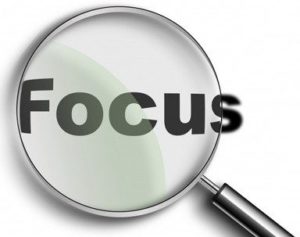Learning for a positive future and a better world at Cuthbertson Primary School
Our continuing focus on self-evaluation is at the centre of our Learning and Teaching Policy. In addition to our school improvement priorities, this policy takes into account the work of the Glasgow City Council Teaching and Learning Strategy, including The Good Lesson, that sees all practitioners engaging in improving practice in a focused, rigorous manner. It is designed as a starting point for teachers to help improve their practice and give a clear focus to lessons, with our school values at the centre.
Our Quality Assurance calendar highlights the core self-evaluation activities within the school. These include classroom support visits by the senior management team, peer support visits, moderation activities, both in school and in partnership with colleagues in their establishments, learning conversations, monitoring and tracking meetings, regular reviews of targeted interventions, relevant continual professional and planning meetings.

Following consultation with teachers, classroom support visits and a review of existing research, it was decided that the following five aspects of learning should be the principal lesson focus in Cuthbertson Primary School.

The five aspects will be displayed in every classroom in order that young people are aware of expectations in their learning.
To support staff further, what follows are a series of brief guides to the five aspects with tips on how to further put them into action.
Focus for Learning

What is it?
Having a clear focus for learning helps pupils to understand what they are learning, why they are learning about it, and what is expected of them to be successful.
The focus for learning can be developed over three areas:
- Learning Intentions
- Success Criteria
- Plenaries
What makes a good Learning Intention (LI)?
Good LIs are set in the context of the learning and use child friendly language. They use words associated with learning, such as ‘to be able to apply our knowledge of…’, or ‘to be able to understand and analyse…’
LIs should be shown and discussed at the beginning of the lesson. It can be useful to keep the LI displayed throughout a task, written down, or revisited to keep it fresh and clear in the pupils’ minds during the lesson. The approach is obviously dependant on the task and subject, and use of resources.
Using Success Criteria (SC)
SC should not be a rephrasing of the LI, instead they should be used to highlight specific procedures or learning outcomes that relate to the learning intention. It is more beneficial for learning if they focus on a process rather than the production of a piece of work.
Pupils can be involved in creating the success criteria through discussions surrounding exemplar pieces of work. You may also wish to include SC relating to skills, e.g. team work, problem solving.
Plenaries
Plenaries should be used to reiterate the focus for learning and to ascertain how successful pupils have been. They can provide greater scope for self-assessment and peer assessment through analysing the work completed during the period. This can be achieved through exit passes, or by using a set of reflective questions to ensure the pupils understand the purpose behind what they were learning that period.
Effective Questioning

Questioning is at the heart of an effective learning environment. A good questioning climate is one that activates understanding and thinking and focuses on the development of learning rather than only testing recall. Allied with varied teaching approaches, young people will be exposed to a range of experiences that promote active learning by making learners think and ask questions. Planned activities will therefore promote a high level of interaction and involvement to ensure that learning and teaching is motivating, stimulating, builds on prior learning and is relevant to learners’ needs.
Strategies to try:
- Higher Order Thinking Skills using Blooms Taxonomy:

- Giving time for students to respond
- Dealing with student responses: Every response deserves a teacher response. Ask other pupils to consider the pupil’s response and look for feedback. Use other pupils to support if pupil is struggling to answer
- Encouraging pupils to use problem-solving strategies presented by the teacher or other classmates
- Inviting students to develop strategies:
Once you have read the question, what is the first thing you should do?
- Encouraging individual involvement
- Language modelling through questioning, expanding on students’ use of vocabulary: When you are asking a question use the language that is pertinent to your subject which helps reinforce the hearing of the use of vocabulary in context.
Class Ethos
Looking at the classroom as a learning environment means that the ‘ethos’ should be suitable to maximise learning for all pupils. This is particularly promoted by the following:
- Teachers establish on-task behaviour through the interactions they promote: teacher- student and student –student; pair work; group work; one-to-one with teacher
- Teachers deal with patterns of classroom behaviour and student competition through establishing expectations, persuading pupils to respect them and applying the expectations consistently: core routines established and in use consistently; Positive Relationships Policy is in practice in the classroom; children are involved in agreeing expectations and creating classroom display of these
- Organisation of the classroom environment including co-ordinating resources and space: classroom is tidy and organised; resources for the lesson are prepared in advance and readily available; resources in use should stimulate and enhance learning
- Promotion of different kinds of motivational goals from teachers encouraging success: fixed versus growth mindset and attributing success and giving praise to effort or strategy rather than ability or luck; promoting “ I can”…not “I can’t”; encouraging an enquiring mind e.g. “ What can I do to help myself here?”
- Make efficient use of lesson time: lessons are not dominated by teacher voice; pupil voice is recognised; planned lessons are varied with appropriate time designated to a variety of activities; pace and challenge are evident; timescales are met.
- Creating an environment of respect and rapport in: expectations, in line with our school values and Positive Relationships Policy, are made clear and consistently applied and young people and teachers interact with each other in a respectful manner.
- Young people as individuals: routines and expectations take into account the differing needs of our young people
Effective feedback
Feedback is information given to the learner about the learner’s performance relative to learning goals. Its principal aim should be bringing about improvements in young people’s learning. Whilst evidence suggests it can have a significantly positive effect, inappropriate feedback can damage learning, making it critical therefore that it is done well.
Effective feedback
- is specific, accurate and clear
- gives young people definitive actions they can take to improve/helps them identify next steps
- is delivered timeously
- references to the specific skill or knowledge in the learning goal
- also references effort
- is used sparingly in order to give it deeper meaning
In practice:
- Feedback should be given as soon after the task as possible: immediate written or verbal feedback (teacher, peer or self ) is most beneficial. More difficult tasks may benefit from delayed feedback to allow students to process the complexity of the information or task. The start of the lesson or the end of the lesson is the best time to review important work as student attention tends to be greater at these times.
- A mix of teacher, peer and self-assessment methods should be used to provide feedback and allow young people to identify next steps: young people require to be trained in providing constructive and relevant feedback.
- Language should be simple, clear and understandable to students: avoid confusing statements with overly complex or technical language such as “analyse, don’t describe”.
- Feedback should be specific and related to the task or process: avoid overly simplistic or vague comments such as “make more effort”, “you talk too much” or “you need to write more” etc. Emphasise the instructional aspects of feedback and not just the corrections and try to focus your comments on what has been done well.
- Feedback should be owned as it is your perception: Use statements such as “I found that…” rather than bold statements such as “It’s obvious that…”
- Suggest goals to focus on in future performance or provide specific strategies that might be applied
- Praise should be related to the learning intentions and success criteria: avoid the lone use of “well done” or “good”. Always add a mental colon after each statement of value e.g. “Well done: your use of key words was more precise in this question than in the last one.”
- Give students opportunity to add to, amend or redraft their work after receiving feedback: Using different coloured pens can make any progress by learners more evident.
Active learning
Active learning:
- is a process where students engage in classroom activities that promote critical engagement – thinking about and making sense of their own learning
- applies that learning across other real-life and imaginary situations
- means that learners take increasing responsibility for their learning
- is rooted in problem solving and is often collaborative
- focusses on the development of vital higher-order thinking skills rather than merely the retention of content
- uses a variety of strategies/activities/games to promote and demonstrate learning , appropriate to the needs of the young people


